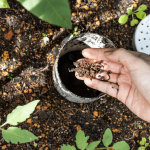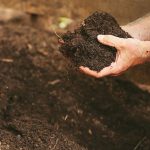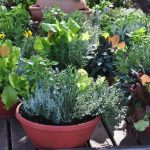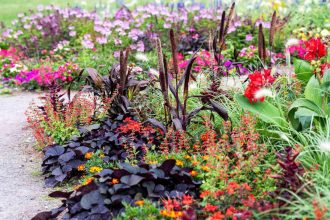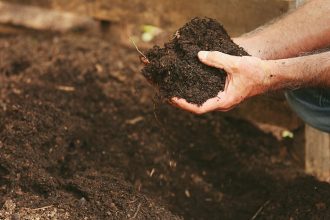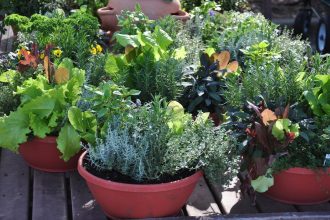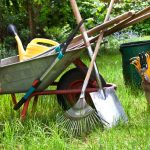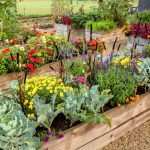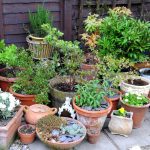In the world of gardening, water is as essential as sunshine and soil. The right amount of hydration can mean the difference between a lackluster crop and a bountiful harvest. In this article, we will explore some essential watering tips to help your vegetable garden thrive and flourish. Whether you’re a seasoned gardener or just starting out, these simple practices will ensure that your plants receive the water they need to reach their full potential. So grab your watering can and let’s dive into the world of watering for a thriving vegetable garden!

Best Times to Water Your Vegetable Garden
Watering your vegetable garden at the right times can make a huge difference in the health and productivity of your plants. Here are some to ensure it thrives:
- Morning: The best time to water your vegetable garden is in the early morning. This allows the plants to absorb the water they need before the heat of the day sets in. Watering in the morning also helps prevent fungal diseases that can occur when plants stay wet overnight.
- Evening: If watering in the morning is not possible, the next best time is in the early evening. Avoid watering in the late evening, as plants may stay wet for too long, increasing the risk of disease.
- During Dry Spells: During hot and dry spells, it’s important to water your vegetable garden more frequently. Check the soil moisture regularly and water as needed to keep the plants healthy and hydrated.
Remember, overwatering can be just as harmful as underwatering. Use these watering tips to keep your vegetable garden flourishing throughout the season!
Understanding Your Plant’s Water Needs
In order to ensure a thriving vegetable garden, it is crucial to have a good understanding of your plant’s water needs. Providing the right amount of water is essential for the health and growth of your plants. Here are some watering tips to help you maintain a healthy garden:
1. Know Your Plant’s Water Requirements
Different plants have different water requirements. It is important to research the specific water needs of each type of vegetable you are growing in your garden. Some plants may require more water, while others may be more drought-tolerant. Understanding these differences will help you provide the appropriate amount of water for each plant.
2. Water in the Morning
Watering your plants in the morning is a good practice as it allows the water to be absorbed by the plants before the heat of the day sets in. This helps prevent evaporation and ensures that your plants have enough moisture to last throughout the day. Additionally, watering in the morning reduces the risk of fungal diseases that thrive in moist conditions.
3. Use a Watering Schedule
Establishing a watering schedule can help ensure that your plants receive a consistent amount of water. Consider factors such as the type of soil, weather conditions, and the specific needs of your plants when creating a watering schedule. Adjust the schedule as needed based on the weather and the condition of your plants.
4. Monitor Soil Moisture Levels
Regularly check the moisture levels of your soil to determine when your plants need water. Stick your finger into the soil to test for moisture, or use a moisture meter for a more accurate reading. Avoid overwatering, as this can lead to root rot and other plant diseases. Properly gauging the moisture levels of your soil will help you provide the right amount of water for your plants to thrive.
| Vegetable | Water Needs |
| Tomatoes | Regular watering, especially during fruiting stage |
| Carrots | Consistent moisture to prevent splitting |
| Zucchini | Regular watering to support rapid growth |
| Spinach | Constant moisture to prevent bolting |
Implementing Proper Watering Techniques
When it comes to maintaining a thriving vegetable garden, proper watering techniques are essential. Knowing when and how to water your plants can make a significant difference in their growth and overall health. Here are some helpful tips to ensure your vegetable garden receives the right amount of water:
- Water in the morning or evening to prevent evaporation and ensure the roots have time to absorb the moisture.
- Check the soil moisture regularly by sticking your finger into the ground. If it feels dry, it’s time to water.
- Water directly at the base of the plants to avoid wetting the foliage, which can lead to disease.
- Use a watering can or drip irrigation system for more precise watering control.
Additionally, adjusting your watering schedule based on the weather conditions is crucial. During hot and dry periods, you may need to water more frequently, while cooler and rainy weather may require less watering. By following these watering tips, you can help your vegetable garden thrive and produce a bountiful harvest.
The Importance of Mulching in Conserving Water
One of the most important aspects of maintaining a thriving vegetable garden is proper watering. Conserving water is not only beneficial for the environment, but it also helps to ensure that your plants receive adequate moisture to grow and produce healthy vegetables. One effective way to conserve water in your garden is through the use of mulch.
Mulching serves as a protective layer on the soil’s surface, helping to retain moisture by reducing evaporation. This means that you won’t have to water your garden as frequently, saving both time and water resources. In addition to conserving water, mulch also helps to suppress weeds, regulate soil temperature, and improve the overall health of your garden.
When choosing a mulch for your vegetable garden, consider using organic materials such as straw, grass clippings, or shredded leaves. These materials will break down over time, adding nutrients to the soil and improving its fertility. Remember to apply mulch evenly around your plants, leaving a small gap around the stem to prevent rot.
In conclusion, by following these watering tips for your vegetable garden, you can ensure that your plants receive the right amount of hydration to thrive and produce a bountiful harvest. Remember to water deeply, consistently, and at the appropriate times to promote healthy growth and strong root systems. With a little care and attention, your garden will flourish and provide you with delicious, homegrown vegetables to enjoy all season long. Happy gardening!


